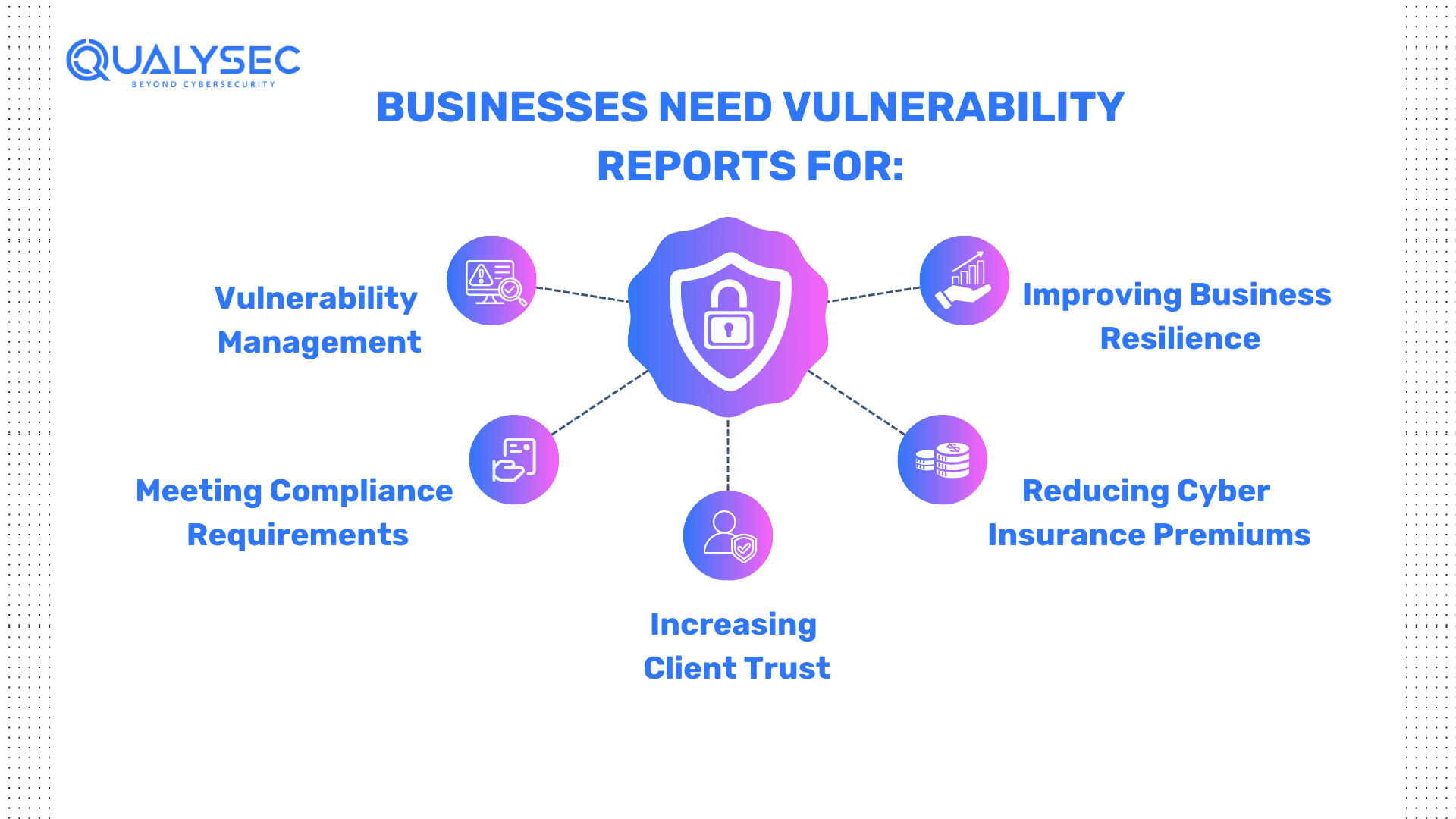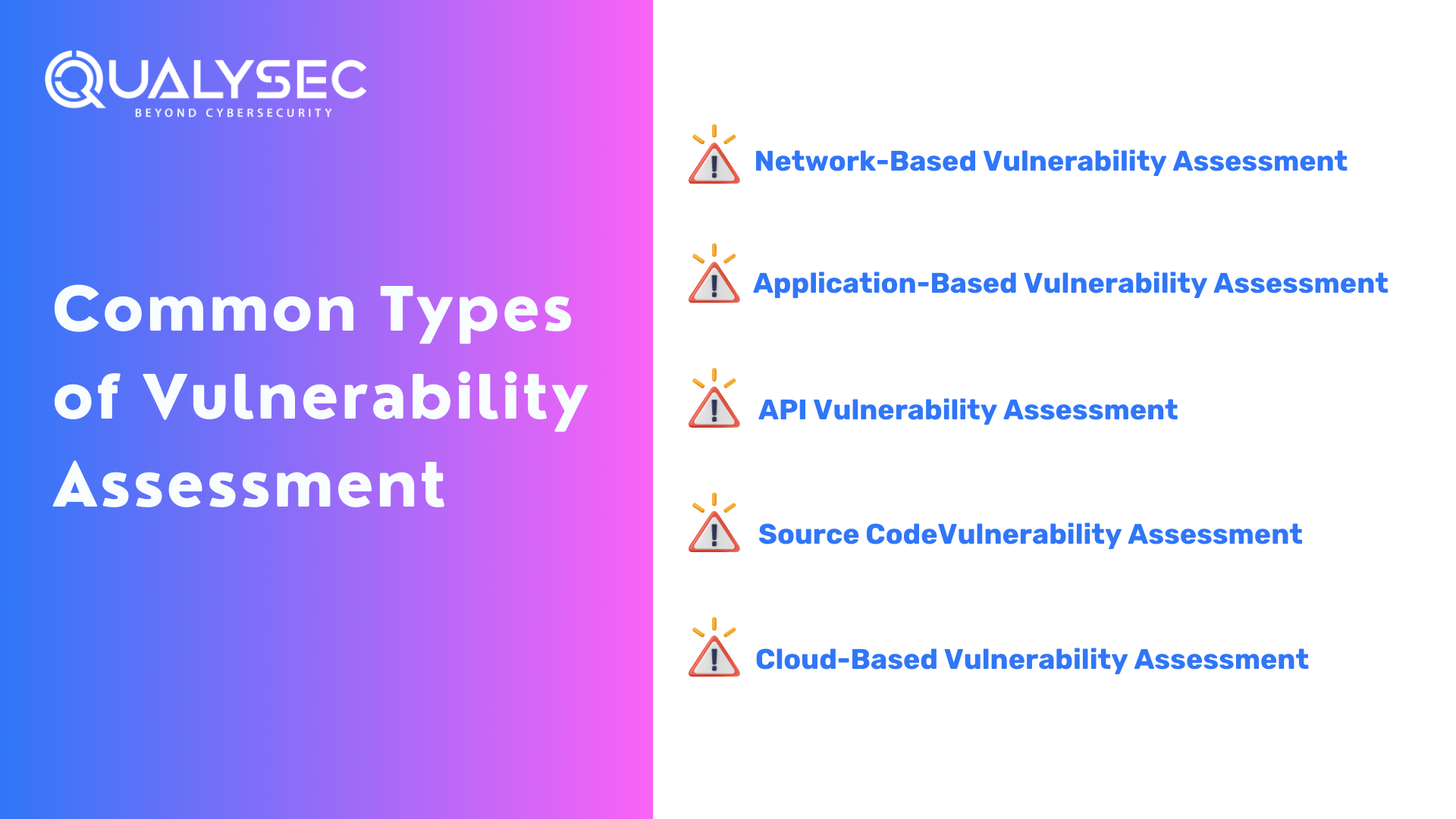Have you ever wondered why businesses need vulnerability assessments? You may have heard clients and stakeholders asking for vulnerability assessment reports, but until now you may not have a brief idea of what it is and why it is so important. A vulnerability assessment is done to identify weaknesses present in an application or network, and its report includes a summary of the process.
According to a study conducted by the University of Maryland, there is a new attack somewhere on the web every 39 seconds. This results in roughly 2,244 attacks daily on the internet. No wonder the need for cybersecurity is increasing day by day.
This blog will focus on vulnerability assessment reports, what should it contain, and why it is important for businesses.
What is Vulnerability Assessment
A vulnerability assessment is the process of identifying, classifying, and reporting vulnerabilities that are present in applications, networks, and other digital assets. It provides organizations with the required knowledge to understand the security risks associated with their IT environments.
Vulnerability assessment typically involves using automated testing tools, for example, vulnerability scanners, whose results are listed in the vulnerability assessment report. Organizations of any size that face the risk of cyberattacks can benefit from the vulnerability assessment.
vulnerability scans help detect security risks like SQL injection, cross-site scripting (XSS), broken access control, outdated security patches, and many other common vulnerabilities and exposures (CVEs). The tools used in vulnerability assessment test the most common security risks listed in OWASP’s top 10 and SANS’ top 25 but are not limited to them.
Read also: Vulnerability Management Services – An Ultimate Guide
What is a Vulnerability Assessment Report
A “vulnerability assessment report ” shows the security flaws found in a vulnerability assessment. It helps organizations understand the risks specific to their technology. In addition, the reports also suggest effective ways to improve security measures without changing the business strategy completely.
If you want to protect your digital assets from cyber criminals or hackers, start with a vulnerability assessment. It’s an automated reviewing process that provides insights into your current security posture. Furthermore, many governments and industry regulations recommend conducting regular assessments for better security.
Download a Sample Vulnerability Assessment Report (VAPT Report) free.
Our experts at Qualysec have helped secure fintech, SaaS, and enterprise systems across 25+ countries. Manual + Automated Pentesting. No false positives. Actionable reports.

What should a Vulnerability Assessment Report contain?
In general, there is no single vulnerability assessment report template that needs to be maintained by everyone, even for compliance purposes. However, if you are complying with PCI DSS, the report has its own specific requirements.
Typically, a vulnerability assessment report will tell you how many weaknesses were found in the tested area at a specific time. Ideally, you would want the report to contain zero issues, but that’s hardly the case, because the world is always changing.
Despite not having a fixed pattern, you can expect a vulnerability assessment report to have the following sections:
|
Section
|
Description |
|
Summary |
– Assessment date range – Assessment purpose and scope – Assessment status and summary of findings, concerning the risks for the client – Disclaimer
|
|
Scan Results |
– Scan results explanation: How vulnerabilities are organized and categorized – Report Overview |
|
Methodology |
– Tools and tests used for vulnerability scanning, like penetration testing, network scans, etc. – The specific goal of each scanning method and tool – Testing environment for each scanning
|
|
Findings |
– Index of all identified vulnerabilities – The severity of vulnerabilities categorized as critical, high, medium, and low
|
|
Recommendations |
– Action recommendations that the client should take – Security tools suggestions to enhance network security – Recommendations on security policy and configuration
|
Why do you need a Vulnerability Assessment Report?
The main goal of a vulnerability assessment is to give the organization a clear idea of the security flaws present in their applications and networks. a report is the medium through which all these are communicated. Here are a few reasons why businesses need vulnerability assessment reports:
For Vulnerability Management
A vulnerability assessment report writes and categorizes the vulnerabilities found in the tested environment, along with the severity of the risks they pose. This helps the company prioritize its remediation process as per the vulnerabilities and allocate its resources where it is needed the most.
To Meet Compliance Requirements
If someone asks for a vulnerability assessment report, especially an auditor, it’s most likely for compliance purposes. Many industry standards or compliance frameworks related to security make it mandatory to regularly scan for vulnerabilities. For example, SOC 2, HIPAA, PCIS DSS, and ISO 27001. Not meeting these compliance requirements would result in legal penalties, so a report is required to avoid those.
To Increase Client Trust
Most of the time it happens that a client requests for a vulnerability assessment report. This is because vulnerabilities in your application can hamper their business. With cyberattacks on the rise, a single vulnerability can significantly paralyze the whole organization. A vulnerability report assures clients that your services or products are free from security flaws and that they are safe to do business with you.
Reduce Cyber Insurance Premiums
A lot of companies insure their business from cyber threats and if you too want it, your insurance provider will need a vulnerability assessment report. A report will help you bring down the premium of the insurance policy.
Improve Business Resilience
Cybersecurity is a major concern for most businesses, so chances are that your stakeholders want to fix security issues before they turn into serious risks. Having a proper vulnerability management in place with clear vulnerability assessment reports will ensure your management’s peace of mind.
The hybrid approach of vulnerability assessment and penetration testing provides a comprehensive analysis of the tested environment.
Contact us now and detect hidden vulnerabilities in your system that could lead to cyber threats!
Talk to our Cybersecurity Expert to discuss your specific needs and how we can help your business.
Types of Vulnerability Assessment
There are multiple types of vulnerability assessments that companies can use to secure different aspects of their business.
Network-Based Vulnerability Assessment
In network-based vulnerability assessment, the experts identify vulnerabilities present in network devices such as routers, switches, firewalls, etc. The main goal is to find security flaws in the network that attackers could exploit for unauthorized access or data breaches.
Network vulnerability assessment generally involves using specific tools and techniques to scan the network for weaknesses. These tools may use various methods such as vulnerability scanning, port scanning, password cracking, and network mapping.
Application-Based Vulnerability Assessment
Application vulnerability assessment reviews software applications including web applications, mobile applications, websites, and APIs. This type of assessment usually involves testing the application for common vulnerabilities like cross-site scripting (XSS), SQL injection, and other OWASP top 10 vulnerabilities.
API Vulnerability Assessment
API vulnerability assessment includes testing the endpoints of an application programming interface (API) for reliability and security. it ensures that basic API security requirements have been met. for example, elements involving user access, encryption, and authentication. the main goal of API scanning is to get insights to find bugs and unusual activity that may resemble cyber threats.
Source Code Vulnerability Assessment
Source code vulnerability assessment involves checking software code for potential security issues. This process looks for mistakes in the code that could be exploited by attackers, like weak passwords or bugs that allow hackers to access systems. By finding and fixing these problems early on, developers can make sure their software is safer from cyber threats. Regular assessments help keep software secure and protect sensitive data.
Cloud-Based Vulnerability Assessment
It identifies vulnerabilities present in cloud infrastructure and services such as Microsoft Azure and Amazon Web Services (AWS). In addition, they also test the security of cloud-based applications and services.
Vulnerability Assessment Report vs Penetration Testing Report
Vulnerability assessment is the process of identifying vulnerabilities present in your applications, network, cloud, or other digital assets. It is usually done with the help of automated vulnerability scanners that scan the respective area for common vulnerabilities by referencing a fixed database.
Penetration testing, on the other hand, involves simulating real cyberattacks on the tester area to find weaknesses in its security measures. It is usually performed by cybersecurity experts who apply hacker-style techniques to enter the system and explore ways through which they can cause damage.
Both services produce reports that showcase the vulnerabilities identified and their remediation method. However, since vulnerability assessment is carried out by automated tools that follow a fixed script, their vulnerability scanning reports don’t display all the security flaws. In penetration testing, since it is conducted by humans and each part is manually tested, their reports provide a detailed overview of all the hidden vulnerabilities, which can lead to security risks.
Have you ever seen a real vulnerability assessment and penetration testing (VAPT) report? If not, check out here a sample vulnerability assessment report by Qualysec Technologies.
Latest Penetration Testing Report

How to write a vulnerability assessment report?
1. Introduction:
- Start with a brief overview of the purpose and scope of the vulnerability assessment.
- Outline the methodology used in the assessment.
- Provide a summary of the key findings.
2. Vulnerability Analysis:
- Identify and prioritize vulnerabilities based on severity and potential impact.
- Include detailed descriptions of each vulnerability discovered.
- Recommend mitigation strategies to address identified vulnerabilities.
3. Conclusion and Recommendations:
- Summarize the overall risk posture of the system or organization.
- Provide actionable recommendations for remediation and risk reduction.
- Conclude with a call to action for stakeholders to address the identified vulnerabilities promptly.
Conclusion
With the evolving nature of cyber threats, businesses must prioritize securing their applications and networks. vulnerability assessment report gives a summary and findings that occurred in vulnerability scans. It allows organizations to identify the vulnerabilities present in their current security measures and make recommendations to fix them.
These reports play a vital role in fulfilling client demands, meeting compliance requirements, enhancing trust, and more. Furthermore, they enhance business resilience by ensuring stakeholders that their business is safe against potential security risks. Overall, vulnerability assessment reports help organizations stay ahead of cyber threats and secure their digital infrastructure effectively.
FAQs
Q: What is a vulnerability scan report?
A: A vulnerability scan report is a document generated by a vulnerability scanner that detects vulnerabilities or potential security risks in the organization’s applications and networks.
Q: What is included in the basic VAPT report?
A: The basic VAPT report will include the following:
- Summary of the vulnerability assessment and penetration testing (VAPT)
- Vulnerabilities identified
- Steps to fix those vulnerabilities
Q: What are the main types of vulnerability?
A: Common vulnerabilities include
- SQL injection
- Cross-site scripting (XSS)
- Software misconfigurations
- Improper authentication mechanisms
- Denial-of-service (DoS) attacks
- Weak encryption


































































































































































































































































































































































































































































































































0 Comments